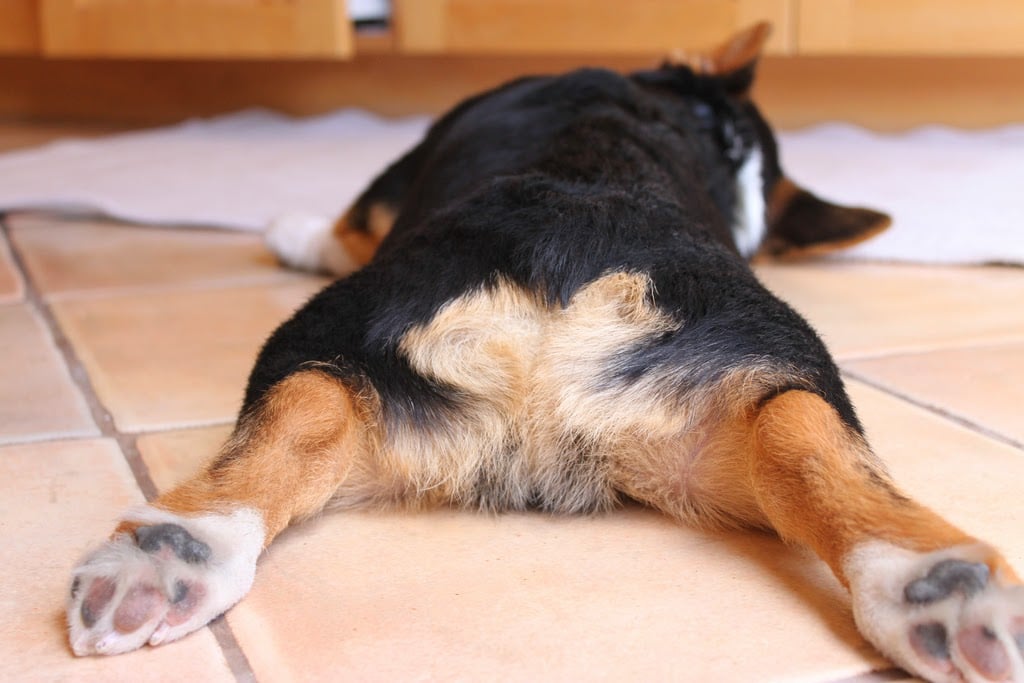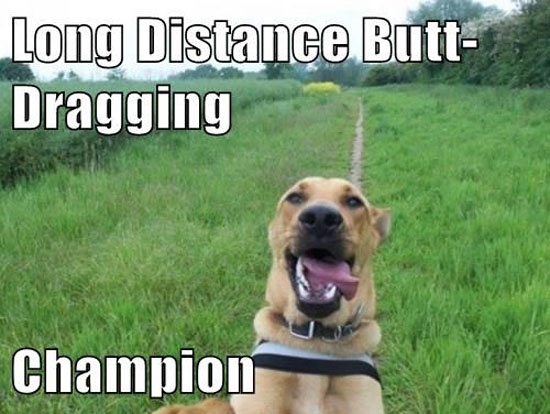Last week, I had a conversation with the owners of a poodle we look after. Based on my observations, I suspected their dog was suffering from an anal sac problem. When I asked the worried dog parents if they were familiar with anal sacs the female owner sheepishly replied "Only from what I saw on The Bachelor..."
Horrified and confused, as I don't watch the Bachelor Australia (The American Bachelor admittedly yes, I do) I had to have her explain. "There was a vet on the show who, upon first meeting the bachelor, brought up anal glands" she said.
"Yep, sounds about right," I thought to myself, as in fact this is something we deal with on a daily basis (though I'd be less than inclined to bring it up on a televised date...)
You can watch Dr. Laura Musgrove earn her title as Dr. Anal Glands here. Or read more about it here. Sorry, Laura, but this one is going to haunt you for a while!
Okay so, I'm sure you're wondering: What are the anal sacs, anyway?
Also known as 'anal glands', the anal sacs are two small pouches located on either side of the anus. The glands line the walls of the sacs, and produce a pungent secretion. Each sac is connected to the outside by a small duct that opens just inside the anus.

What is their function?
The secretion acts as a territorial marker -- it is squeezed out onto the feces by muscular contractions when the animal passes stool. Charming, I know.
Who has them?
Many mammals of both sexes have anal glands or similar structures. Dogs, cats, bears, possums and... humans! YES, humans have glands in the anus that are similar to the sacs described above. But since we don't (typically) worry about marking our territory, what purpose do they serve for us? Well, not much. In fact, the anal glands are considered vestigial (unnecessary) in humans but can serve as a potential location of disease.
Are the anal sacs causing a problem in my dog?
If your dog (or cat) is dragging it's rear-end along the ground, they may be suffering from an anal sac problem (this is most often the first sign). There may, however, also be licking or biting, often at the base of the tail rather than the anal area. Sadly, anal sac disease can also be very painful. If the sac ruptures, you may find blood or pus draining from the rectum.

Why are the anal sacs causing a problem in my pet?
Anal sac disease is very common in dogs. The sacs frequently become impacted (blocked), usually due to inflammation or obstruction of the very small ducts. The secretion within the impacted sacs will become thick and the sacs swell up. The material within the anal sacs is an ideal place for bacterial growth, allowing abscesses to form. If the abscess bursts, it will release greenish yellow or bloody pus. If left untreated, the infection can quickly spread and cause damage to the anus and rectum (not to mention it will also be very painful.)
How does a vet treat anal sac problems?
Treatment greatly depends on the cause and severity of the condition. If you are concerned that your pet may have an anal sac problem, call your veterinarian. Treatment for impaction involves manually expressing/emptying the sacs. If the're is an infection, flushing of the sac may be required. Since these conditions are very painful, many animals will require sedation or an anesthetic for this treatment. Antibiotics and anti-inlammatories are often prescribed. In advanced, severe, or recurring cases, surgery may be necessary.
It's also worth noting, most dog groomers will routinely express anal glands as part of regular hygienic maintenance, during your grooming visit.
Is this likely to be a recurring problem?
Some dogs will have recurrent anal sac impactions or abscesses. Others may have a problem only once. In severe and recurring cases, your veterinarian may recommend surgical removal of the sacs.
Are anal sacs necessary for my animal? Will removal have any adverse effects?
Removal of the glands does not adversely affect your animal since they are domesticated, and do not rely on territorial marking.
My dog is very nervous and sometimes seems to express his own glands. Is this normal?
It is a common behavior that dogs release the contents of their anal sacs if they are startled or frightened.
So, if you see your dog or cat "doing the scoot dance" or licking that area of their body, please see a veterinarian. While anal gland problems may be unpleasant for you, I can guarantee they are even more unpleasant for your pet!

